The new Nikon 300mm PF f4 positively defies its form factor with astonishingly good performance. As my review will cover, it may actually, it may be a little too good for it’s own good. You see, this lens hasn’t been without it’s fair share of debate. All seem to be in agreement about it’s optics and compact design. But with a lot of discussion surrounding the VR system, I was keen to try the lens out and review it for myself and more so, to see if it’s £1600 ($1999) price would make it a worthy addition to a wildlife photographers kit bag.
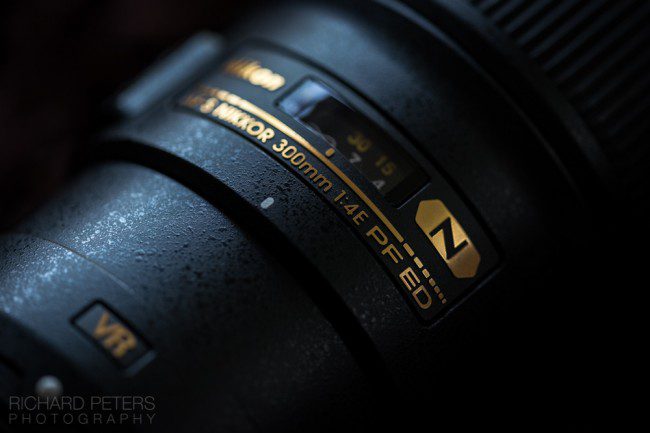
The big buzz words around the release of this lens of are of course Phase Fresnel. The internet is awash with far more eloquent explanations of how this works, than if I were to try and do it justice in this review with a brief sentence about concentric circles and comparisons to lighthouses, so I’ll just get right down to the headline act of why you, as a photographer, should care about Nikons first leap in to the world of Phase Fresnel. And it’s really quite simple.
Less weight. Smaller size.
Things to love about the 300 PF. Reason 1: Less weight
Picking this lens up for the first time, it almost feels weird. It’s like you’re experiencing something that your brain is telling you shouldn’t be possible. As a photographer who has lugged around the beautiful but monstrous 600 f4 for many years, I can’t state enough the appeal of the newer generation of lighter lenses that are gradually coming to the market. Of course, comparing a 600mm f4 to a 300mm f4 is a little like chalk and cheese, but not quite as much so as you’d think, as I’ll explain a little further below.
Coming in at around 750g (compared to the older models 1.3kg, or 1.4kg with the lens foot added), walking around with this lens all day is no problem at all, even when paired to a pro DLSR body. I didn’t have it long enough to take it on any air travels with me, but with airline weight restrictions becoming more and more strict, let alone the physical act of just getting all your gear from point A to B and shoehorning everything in to camera bags, any reduction in weight is welcome, especially when as substantial as this. Even without comparisons to other lenses, it’s an impressive feat of engineering and one that your back will most certainly thank you for, if you add this lens to your camera bag.
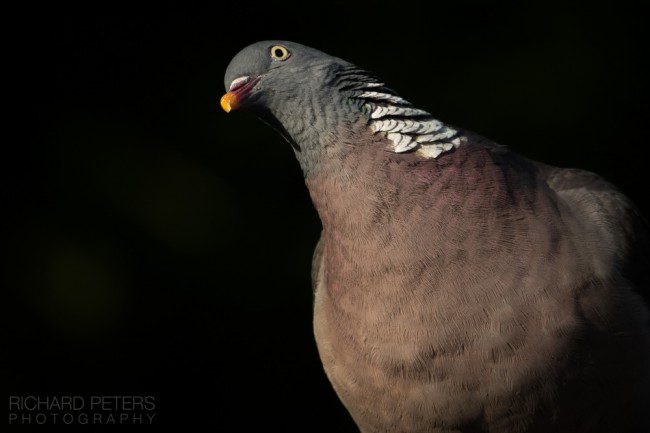
Nikon D7200, 2x TC (600mm), f9, ISO 180
There is one small caveat to huge weight reduction, that being it’s nice to actually have some weight to a lens in order to hold it steady when shooting handheld. I appreciate that might sound like an odd thing to say, but where heavy lenses are awkward to keep steady, so too are they if light with a long focal length. This new 300mm, when paired to a DX sensor, is about as light as you would actually want to go before the weight reduction would actually start to be a slight disadvantage, making it a near perfect balance between practicality and operation, without over stepping the mark.
Build quality is of a high standard. It feels solid, despite the weight reduction, although you probably wouldn’t want to drop it from any great height on to a hard surface. But with that being said, regardless of the build quality, you really wouldn’t want to do that with any lens…!
Reason 2: Smaller size
That initial impression of disbelief with the weight doesn’t stop there. This f4 is also incredibly small at only 147mm in length. That brings it in just shy of 75mm, or 3″, in reduced height to that of it’s predecessor. In fact, the new 300 f4 PF is actually shorter with it’s lens hood attached than the former version without it’s lens hood on. It really cannot be understated just how compact this new lens is. Sure there are zoom lenses around that are very small too (actually, the 70-300 VR is barely any shorter), but the real feat of engineering here lay within the fact this isn’t a variable aperture zoom, it’s a fixed f4 prime. I was trying to work out how to explain in words just how small this thing is, and realised it’s one of those times where pictures speak a thousand words. So I had great fun stacking it up against some of my other kit to demonstrate.
It’s about the same height as a gripped D810. That’s kinda cool, but even more impressively, it stands up INSIDE the lens hood of the 600 f4.
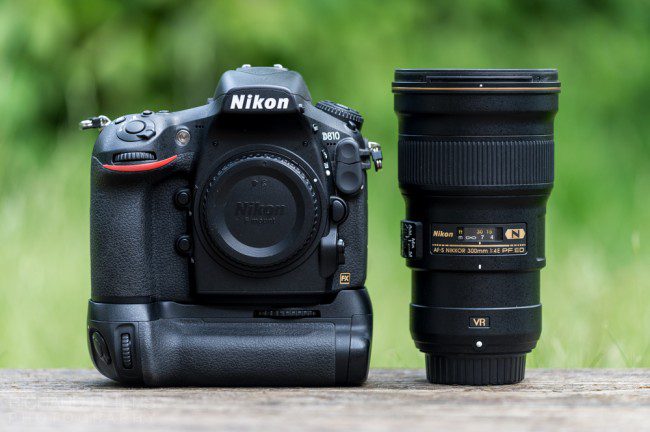
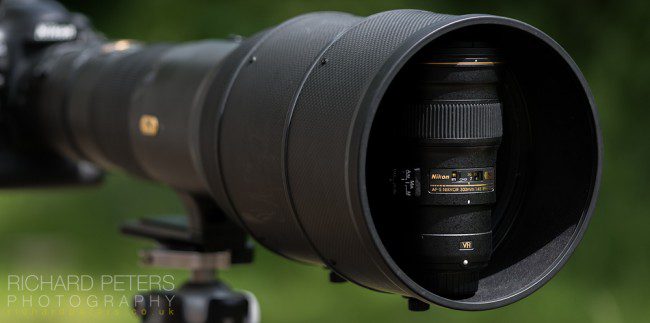
But to really bring home how times are changing, I’ll come back to the reference I made to the 600 VR earlier. Here it is paired with a D4, alongside the new 300 PF, with a TC-14EIII attached on a D7200. Both of these combinations will give you around the same 600mm field of view, with only a stop difference in aperture of f4 vs f5.6. Sure there are other factors to include here that make these two very different setups, but this image really does sum up how technology and good quality optics are changing the face of the industry, especially at the consumer end of the market.
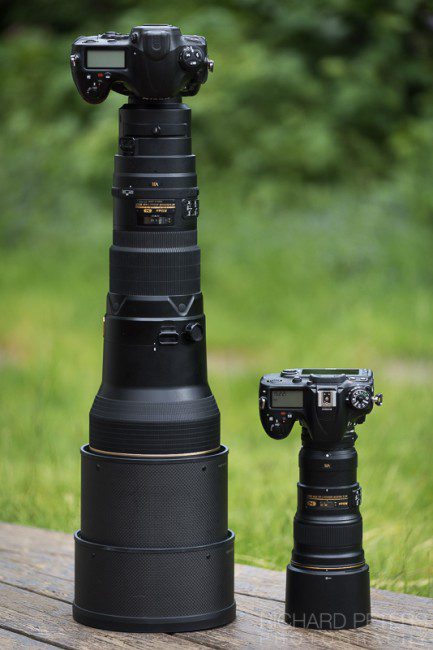
The mighty 600 VR next to the 300 PF with a 1.4x TC
300 PF image quality and optics
So we know it doesn’t weigh much and we know it doesn’t take up much space in the camera bag. At this point I think you’d almost forgive the 300 PF if it’s optics were only good, given the other benefits it achieves. But they’re not just good, they are in fact exceptional. I have absolutely no complaints about the image quality this lens produces, especially when paired up to higher resolution bodies. It’s very, very sharp. Wide open or stopped down, full frame or crop sensor this lens delivers impressive results by anyones standards.
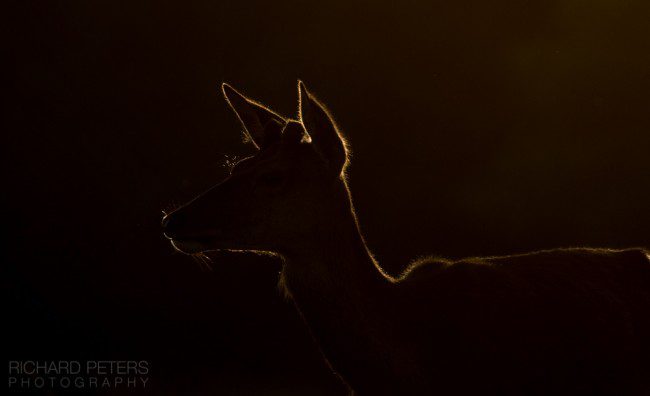
D7200 with 1.4x, 420mm, 1/2500, f8, ISO 360
It’s not all 100% good news however. There can be some optical downsides caused by the Phase Fresnel element, which are observable under certain conditions. Very bright light can introduce coloured halo’s or flares around the source which could come in to play if care were not taken, especially when shooting with a lot of artificial lights in the frame. Personally, I didn’t come across a situation where this presented itself. That’s not to say I avoided scenes that might show it up, more so that I simply shot as normal and being that I photograph wildlife, there are rarely bright light sources of the specific type that would cause the issue to appear. I would hazard a guess that this is something that needs to be more carefully considered if you’re a nighttime cityscape or wedding photographer, but in the majority of wildlife situations, it’s certainly not something I would worry about.
Adding a teleconverter to the mix makes things a little more interesting. I paired this up with both the Nikon TC-14EIII and TC-20EIII, which are the latest versions of both the 1.4 and 2x teleconverters respectively.
[clickToTweet tweet=”The Nikon 300 PF offers incredible optical performance, even with a 1.4x attached.” quote=”The Nikon 300 PF offers incredible optical performance, even with a 1.4x attached.”]
With the 1.4x bolted on to the 300 PF, the results are very impressive. Autofocus is still nice and quick and even wide open detail is more than acceptable. There is still plenty of sharpness on offer and there is very little hit on contrast. I had absolutely no worries about shooting wide open whatsoever with this combination. Stopped down a little, even by as much as 1/3 of a stop and sharpness is improved further still. Now don’t get me wrong, you will always lose some sharpness when adding converters, always. There are plenty of MTF charts out there to demonstrate this fact. However, where it counts, which is the real world, is what we should all be worrying about and is the reason I always put real world sample images in my reviews. And here, this lens and converter combination will not disappoint you.
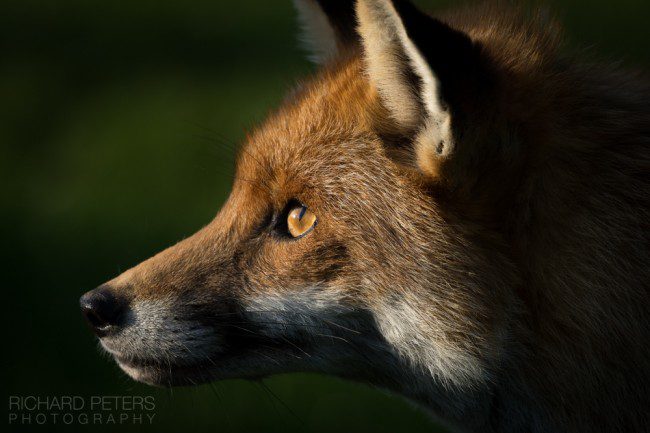
D7200, 1.4x TC (420mm), 1/640, f6.3, ISO 200
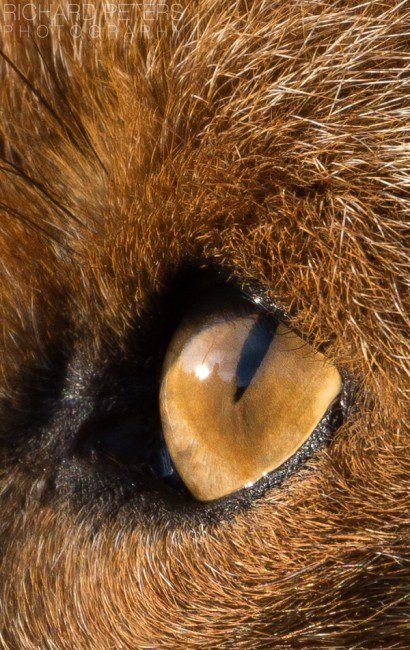
100% crop, click for full size
With the 2x TC, things are a little different. As expected, autofocus speed takes a big hit in all but the brightest of conditions. That’s just the way it is. Such converters are really designed to work on f2.8 lenses as apposed to f4’s, and even then, you’ll still get a loss of focus acquisition as light levels start to fade. As for the image quality, it’s a mixed bag. Wide open, things are a little soft and lacking the contrasty punch we know the lens is capable of delivering. Stopping down does improve though, but shooting at f10 isn’t always going to be practical, depending on your subject. I also noticed that results were a little hit and miss with this combination, meaning you have to really work hard to get the best of the setup. You can’t simply point the camera at your subject, quickly fire a shot off and walk away. You have to take care of your technique, make sure the focus is point is bang on and really take your time to avoid camera shake. Again this references back to my earlier comment about lenses being almost too light to hold steady, if the focal length offers a lot of reach.
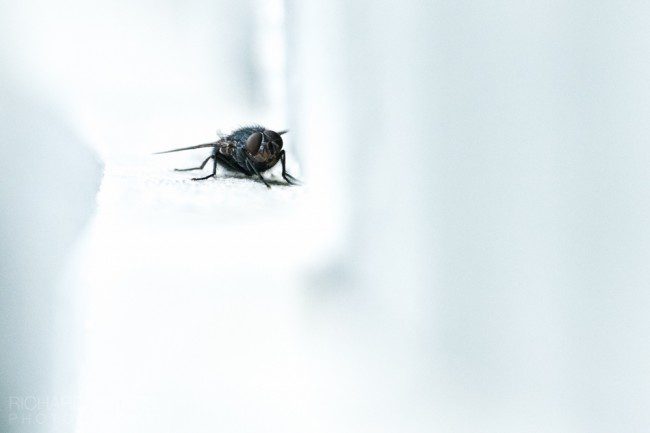
D810 with 2x TC (600mm), 1/1000, f10, ISO 2500
Personally, I would say this, if you already own a TC-20EIII, then there will be times it will act as a get out of jail free card, if you’re careful and the conditions are right. But if you don’t own one, you may almost be better off sticking to the TC-14EIII and cropping in on your images.
The VR debate. Does the 300 PF have good Vibration Reduction?
This has been talked about as the major downfall of this lens since it’s release with mixed reports being fed back. Some owners have complained the VR, when paired to a D8XX series body does not work at certain speeds, producing softer images than when VR is turned off. Other reports suggest it affects other cameras too, and most say it affects the shutter speeds of 1/125 & 1/160. A real mixed bag of possibility. But it was one that prompted a firmware update from Nikon not long after the lenses initial release.
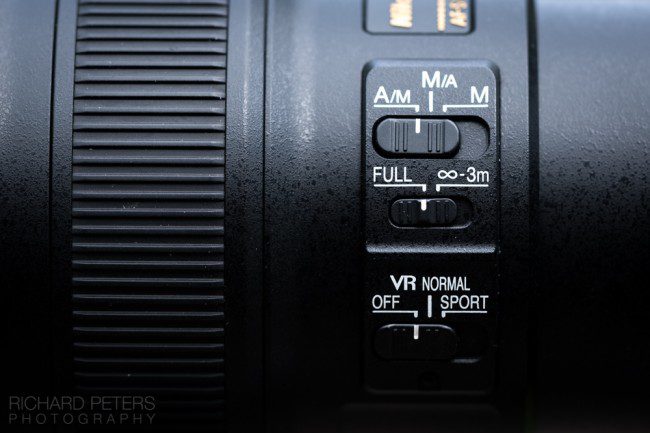
I approached this subject without really knowing what to expect. Having now tested it a little (all very unscientifically), all I can comment on, is how I found the VR to perform for me, on my D810 (which is commonly referred to as the body most find the issue to be with). I did several tests, taking a photo of a coin on a piece of paper and a feather, which more accurately represents the type of thing I would photograph. Below I’ve only shown a couple of 100% crops simply because do I have the time to put together a fully comprehensive comparison, nor do I feel one is required.
To conduct this test I took several quick shots in succession with VR off, in order to pick the sharpest of the bunch. The reason for this is often if you take a burst of shots at a slowish shutter speed, some will be sharper than others as the vibration of the mirror, combined with your own technique for holding the lens steady, can produce quite varied results. Once I had the sharpest image, I then took a single image with VR on. I only did a single shot to make it extra hard for the VR to compete, after all, it’s there it counter the internal vibrations and my own hand, so it should be much better straight off the mark.
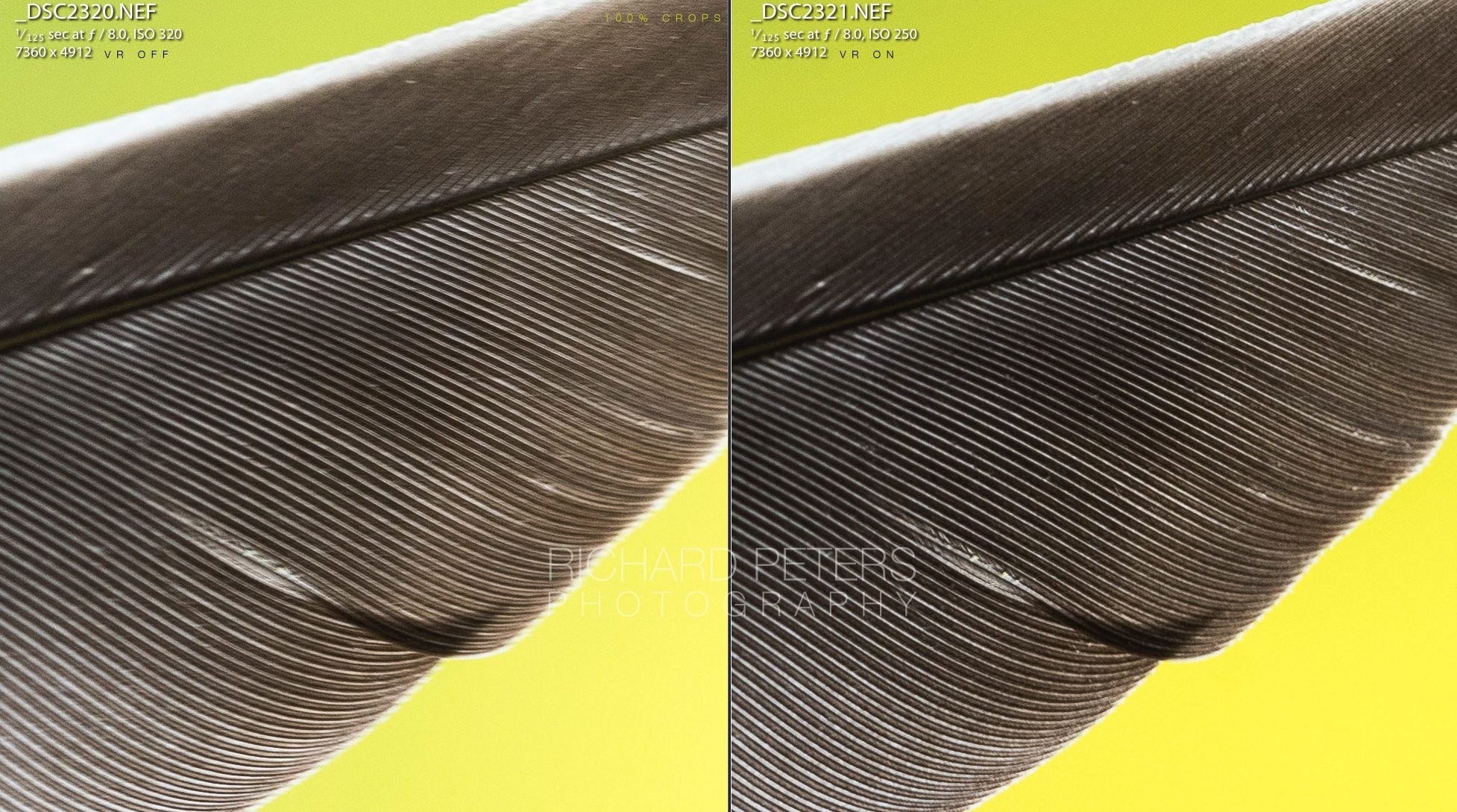
1/125s 100% crops comparisons
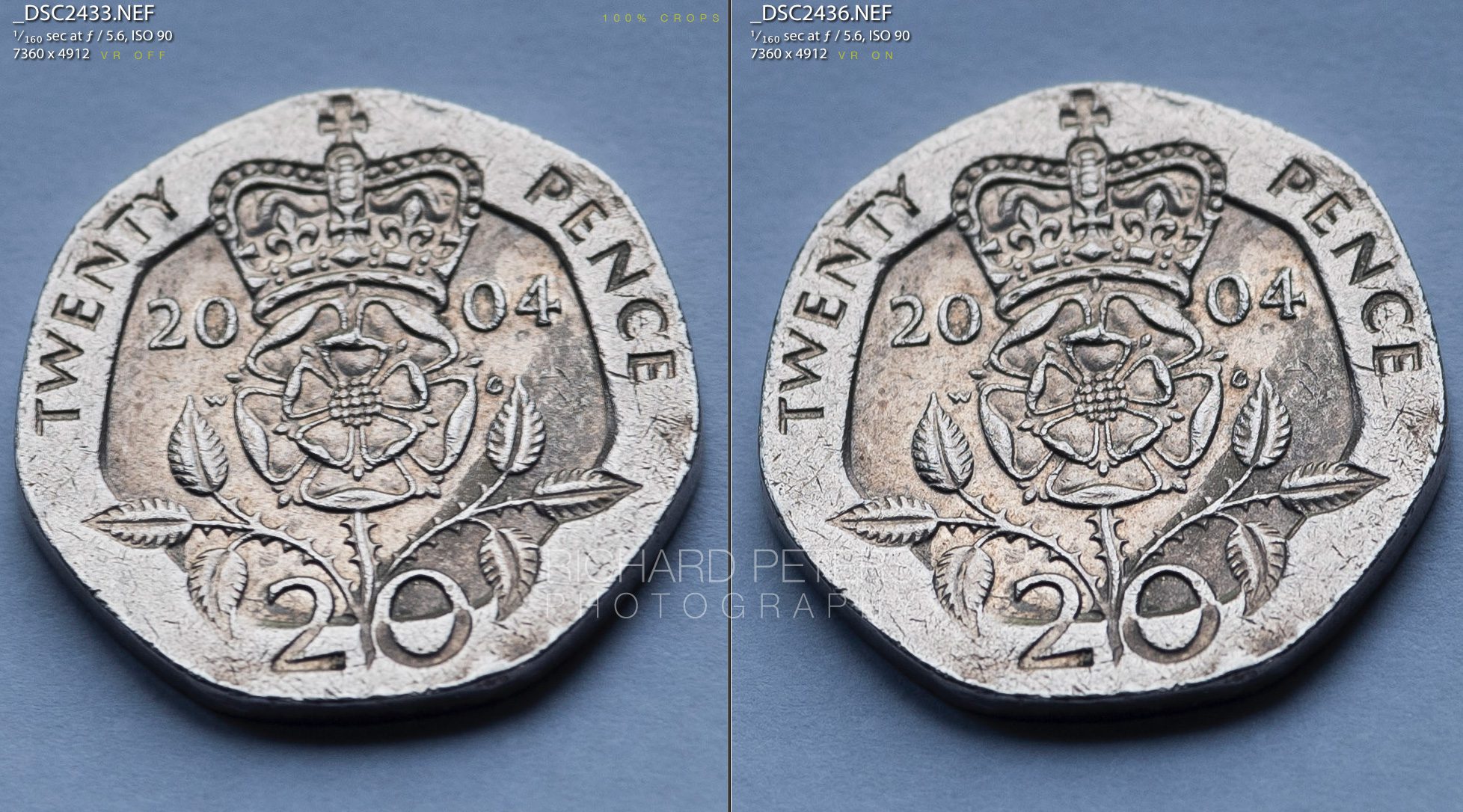
1/160s, 100% crop comparisons
PLEASE NOTE: The above are screen grabs from my 27″ iMac, so they may not display full width depending on your browser window size. In which case, downloading them will offer optimum viewing.
To my eye, the images with VR on certainly had an edge over those without. You can decide how much better they are, but it most certainly wasn’t worse with VR on. Actually had I shown the worst of each shot without VR the difference was quite dramatic but I didn’t want to turn this in to a review full of tons of 100% crops, nor did I want to bias the results by making the comparisons look unfairly different. This was the closest I could get them to each other. A best case scenario for showing up how the VR performs in its shutter speed dead zones.
I would hazard a guess that those who have trouble keeping a lens steady at slow shutter speeds will certainly see the VR helps, rather than makes the image softer. If this was a lens that has already had the firmware update, then it seems to have worked. And if it hadn’t, then bigger improvements should be made with any newly purchased copy.
WHERE IS THE TRIPOD COLLAR?
Ah, so you’ve spotted there isn’t one attached! The reason for this is quite simple. The RT-1 tripod collar is an optional accessory for the 300 PF. But before we all get a little grumpy about having to spend more money, which ups the cost of owning this lens, I’ll say this. With the lens being so light, you may not actually need one. I had the lens mounted on both my D810 and the D7200, and even my little D3200. In each case, I felt no concern towards the lens being too heavy for the lens mount. If you need to mount the lens to a tripod, you can just mount the camera instead.
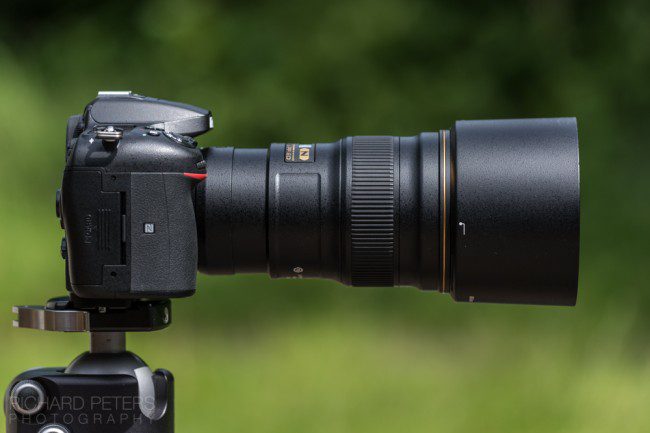
However, given it’s higher purchase price, I do understand why some may feel a little cheated having to spend extra money on buying one. But I do suspect it’s not an item that will sell in very high volumes.
THE DX EFFECT
Whilst all of the points raised above hold true regardless of the camera you will be pairing the lens with, where it really, really shines is when paired up to a DX sensor. I had the use of a D7200 during my testing and found the two to be a truly impressive combination. It was a breath of fresh air walking around with a setup that gave me an equivalent focal length of 450mm or 630mm when using a converter.
With that in mind, the 300 PF becomes an even more powerful and versatile lens, capable of offering a huge variety of focal options, despite being a prime lens, especially when you factor in the closest focus of 140cm (or 55 inches). This adds greatly to the versatility, especially when those converters and DX bodies are thrown in to the mix. Going one further and paired the 300 pf with the Nikon D500, you get an exceptionally powerful and easily manageable wildlife setup.
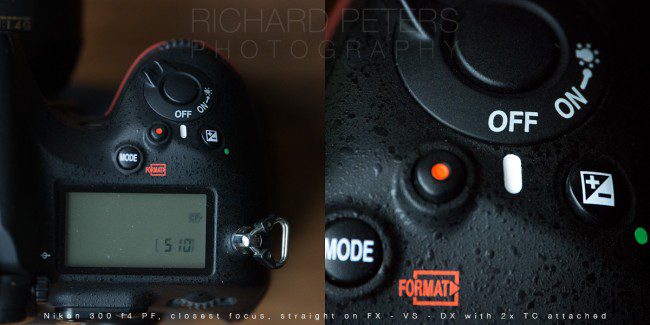
I’d actually forgotten just how much fun and useful crop sensors could be for wildlife work. Sure you can crop in to a 36mp full frame file quite substantially to achieve the same results, but with the D7200 being a 24mp sensor, it’s actually going to get more pixels on your subject than using the DX mode of the D810. I’d be lying if I didn’t say I’ve got a real desire to pick up a higher end DX body again!
VERDICT: Is the Nikon 300 PF worth buying?
The latest 300mm prime in the Nikon stable is a special lens. There’s simply no doubt about it. Its insanely compact size and weight make it a complete joy to use and I’ve no doubt it wouldn’t be an unfair statement to say this is possible the perfect travel telephoto lens, especally if you are limited on space, and/or have a DX sensor and a 1.4x TC. I took it along to a workshop I was running at the British Wildlife Centre and after 8 hours of walking round with it, felt absoutely none of the usual long lens fatigue that is associated with carrying around telephoto prime lenses. Actually, one of my participants had the f2.8 version, and we both marvelled at the difference between them. If Nikon were to release a 400, 500 and 600 PF range of lenses, they’d be game changers for many, of that there is no doubt!
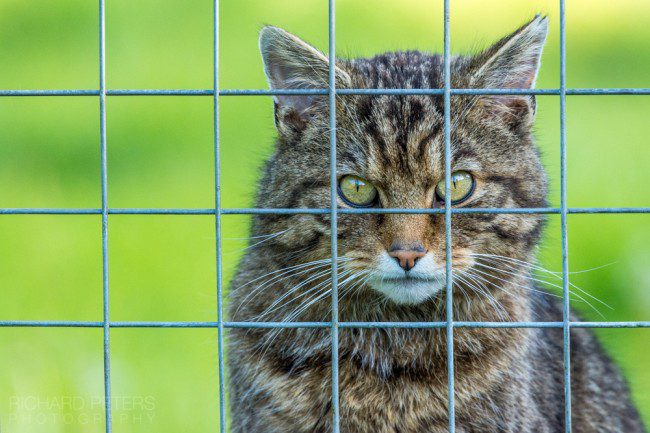
The 300 PF was a pleasure to use on my BWC workshop
But let’s have a quick reality check. There is a good reason f2.8 lenses and larger focal length f4 primes cost so much and are far bigger in size. They’re built better, sharper, offer more creative use of depth of field, handle converters with more grace and have better autofocus, especially in low light. Generally, you can see where the extra thousands(!) of your hard earned pennies are going.
However, there’s no doubt in my mind that small f4 telephotos have their place and not just in the average consumers kit bag, but also the pro looking for a high quality backup lens. So, does the 300 PF f4 signal the end of the more exotic super telephotos? Well, not just yet. However, like the lens itself, the trade-off between cost and quality just got that little bit smaller.








